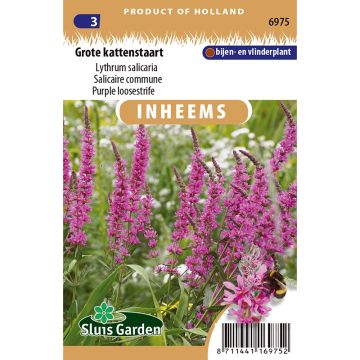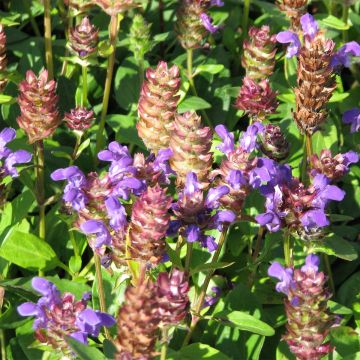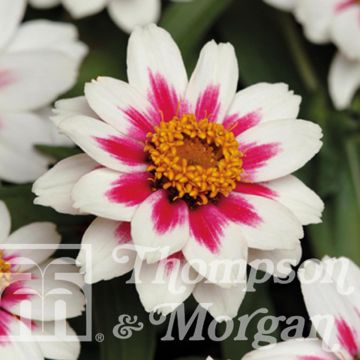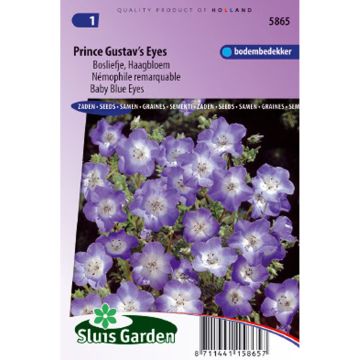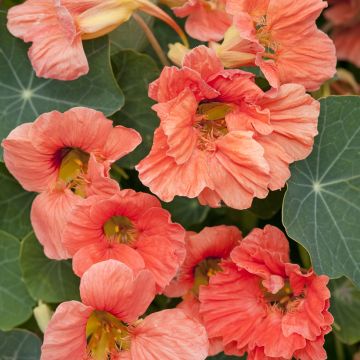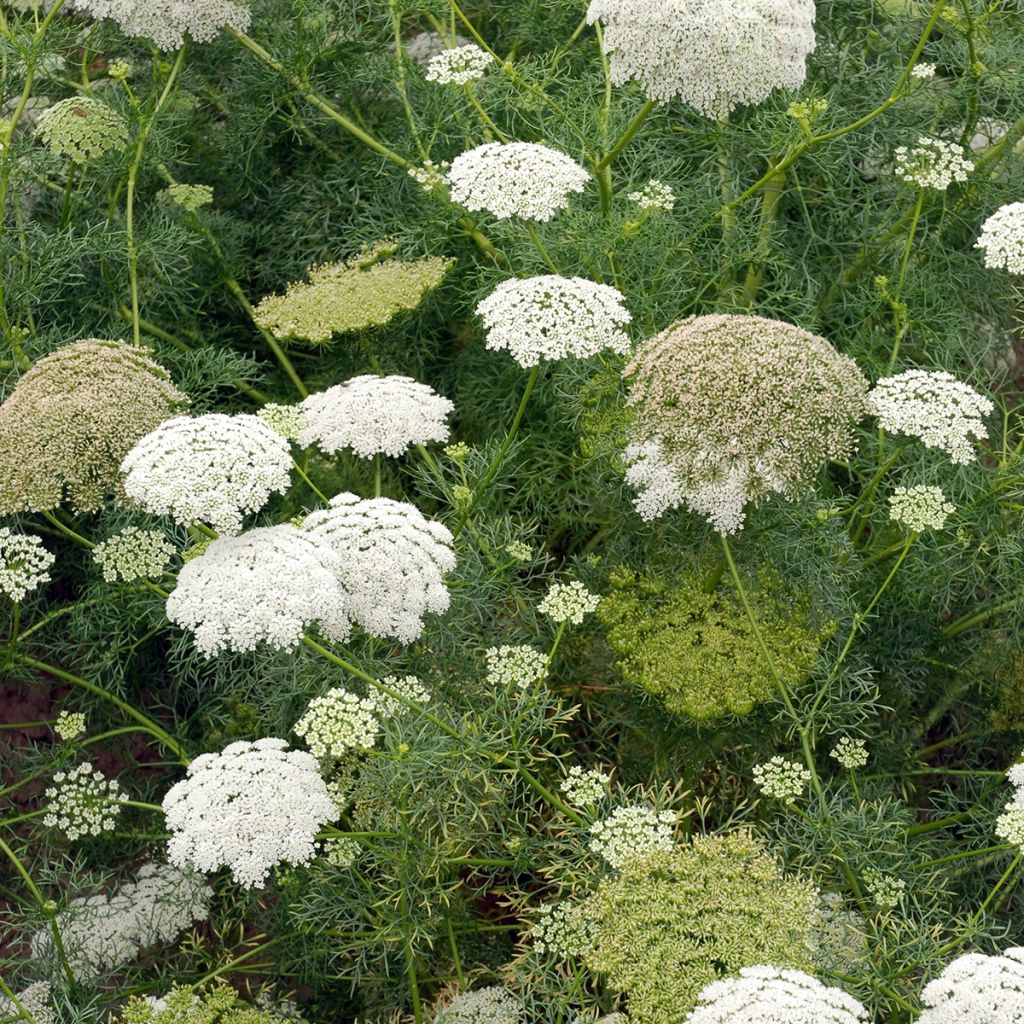

Graines d'Ammi visnaga Green Mist White
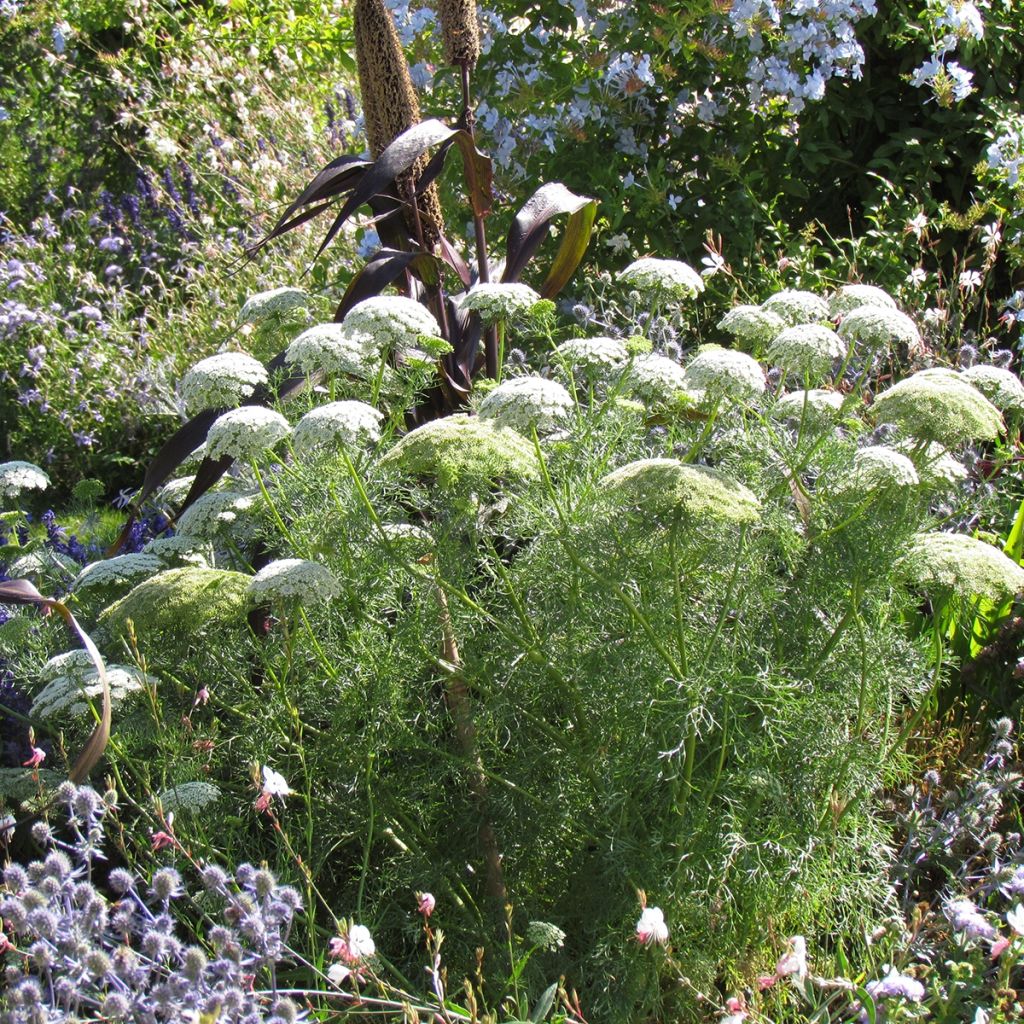

Graines d'Ammi visnaga Green Mist White
Ammi visnaga - Toothpick plant
Ammi visnaga
Toothpick plant, Toothpick weed, Khella, Bisnaga, Bishop's weed
Sown in autumn (the winter is mild in our regions), it starts flowering in mid-June. The height is much greater than what you indicate despite the poor and dry soil and the lack of maintenance, reaching up to 160 cm (63in), with a flower diameter of about 15 cm (6in). It withstands wind well.
Diego, 15/05/2023
This item cannot be shipped to the selected country
Dispatch by letter from €3.90
More information
Schedule delivery date,
and select date in basket
This plant carries a 6 months recovery warranty
More information
We guarantee the quality of our plants for a full growing cycle, and will replace at our expense any plant that fails to recover under normal climatic and planting conditions.
Seed-only orders are dispatched by sealed envelope. The delivery charge for seed-only orders is €3.90.

Does this plant fit my garden?
Set up your Plantfit profile →
Description
Originally from Egypt, Ammi visnaga, also known as Visnaga daucoides, is more commonly referred to as Khella. It is a highly aromatic Mediterranean annual plant that forms an elevated and graceful clump, covered in large, round, and particularly architectural white umbels, resembling fine lace on a light foliage similar to that of fennel. They are highly visited by pollinators. It is a remarkably fragrant plant, highly useful in phytotherapy, and well-adapted to summer drought. Perfect for natural areas in dry soil, country-style flower beds, or in a simple garden, it is also an excellent cut flower.
Ammi visnaga belongs to the family of Umbellifers or Apiaceae, like carrots and celery. This annual plant is native to the Mediterranean region. It is also found in large quantities in North Africa. This plant forms a clump that reaches 1m (3ft) in height, approximately 60cm (24in) in diameter, and shows rapid growth. It has a taproot. Its stems are branching, robust, furrowed at the top, and entirely covered in strongly dissected light green foliage. The leaves, similar to those of fennel, are hollowed out with small channels, laciniate, and highly aromatic. The flowering occurs from July to September-October, in the form of a curiously constructed white umbel, with a powerful and pleasant fragrance, green, herbaceous, slightly pungent, and slightly aniseed. The flat and white umbel becomes concave and more or less green when ripe. It consists of very dense umbellules (mini umbels) composed of numerous thick and connivent ray florets after flowering, which are inserted on a receptacle that widens into a disc when ripe. The flowers start off white and evolve into cream, acid green, and yellowish-green with age and fruiting. They produce abundant nectar, attracting numerous insects.
Known since ancient times for its numerous medicinal properties, this wild plant demonstrates great robustness and a strong personality, both visually and with its fragrance. Plant it into country-style flower beds, alongside shrubs with summer flowering, in slightly wild areas of the garden, where it will require no particular care. It is one of those plants that grow on their own, like Damask nigellas, Cosmos, perennial flax, California poppies, Phacelia with tansy-like leaves, sainfoin, cornflowers, and many others. Alongside these, it is an ideal plant for filling a brand-new garden or hiding the damage caused by a harsh winter.
Report an error about the product description
Flowering
Foliage
Plant habit
Botanical data
Ammi
visnaga
Apiaceae
Toothpick plant, Toothpick weed, Khella, Bisnaga, Bishop's weed
Visnaga daucoides
Mediterranean
Other Thompson and Morgan seeds
Planting and care
Sow Ammi directly in open ground, from March to April, even until June. This plant with a taproot does not tolerate transplantation well. Carry out this operation in a very sunny location, or in partial shade, in well-tilled and well-drained soil. Sow the seeds finely, at a depth of 1.5 mm (0.05in), in small holes spaced 30cm (12in) apart. Keep the soil moist, especially during dry periods. Germination usually takes 7 to 21 days. When the Amni seedlings are large enough to handle, thin out the planting, keeping one plant every 25 cm (10in). Amni visnaga likes well-drained soil and sunlight. It will grow larger in damp and fertile soil, but can tolerate poor and dry soil in summer. Under the weight of the umbels, the stems may tend to lean; plant a few stakes to support the clumps. Ammi visnaga can self-seed quite easily. Let the inflorescences go to seed; you will be surprised to see new plants emerge in the following spring. You can encourage self-seeding by adding a mulch at the base of the plant. It will protect the seeds.
Sowing period
Intended location
-
, onOrder confirmed
Reply from on Promesse de fleurs
Flower seeds
Haven't found what you were looking for?
Hardiness is the lowest winter temperature a plant can endure without suffering serious damage or even dying. However, hardiness is affected by location (a sheltered area, such as a patio), protection (winter cover) and soil type (hardiness is improved by well-drained soil).

Photo Sharing Terms & Conditions
In order to encourage gardeners to interact and share their experiences, Promesse de fleurs offers various media enabling content to be uploaded onto its Site - in particular via the ‘Photo sharing’ module.
The User agrees to refrain from:
- Posting any content that is illegal, prejudicial, insulting, racist, inciteful to hatred, revisionist, contrary to public decency, that infringes on privacy or on the privacy rights of third parties, in particular the publicity rights of persons and goods, intellectual property rights, or the right to privacy.
- Submitting content on behalf of a third party;
- Impersonate the identity of a third party and/or publish any personal information about a third party;
In general, the User undertakes to refrain from any unethical behaviour.
All Content (in particular text, comments, files, images, photos, videos, creative works, etc.), which may be subject to property or intellectual property rights, image or other private rights, shall remain the property of the User, subject to the limited rights granted by the terms of the licence granted by Promesse de fleurs as stated below. Users are at liberty to publish or not to publish such Content on the Site, notably via the ‘Photo Sharing’ facility, and accept that this Content shall be made public and freely accessible, notably on the Internet.
Users further acknowledge, undertake to have ,and guarantee that they hold all necessary rights and permissions to publish such material on the Site, in particular with regard to the legislation in force pertaining to any privacy, property, intellectual property, image, or contractual rights, or rights of any other nature. By publishing such Content on the Site, Users acknowledge accepting full liability as publishers of the Content within the meaning of the law, and grant Promesse de fleurs, free of charge, an inclusive, worldwide licence for the said Content for the entire duration of its publication, including all reproduction, representation, up/downloading, displaying, performing, transmission, and storage rights.
Users also grant permission for their name to be linked to the Content and accept that this link may not always be made available.
By engaging in posting material, Users consent to their Content becoming automatically accessible on the Internet, in particular on other sites and/or blogs and/or web pages of the Promesse de fleurs site, including in particular social pages and the Promesse de fleurs catalogue.
Users may secure the removal of entrusted content free of charge by issuing a simple request via our contact form.
The flowering period indicated on our website applies to countries and regions located in USDA zone 8 (France, the United Kingdom, Ireland, the Netherlands, etc.)
It will vary according to where you live:
- In zones 9 to 10 (Italy, Spain, Greece, etc.), flowering will occur about 2 to 4 weeks earlier.
- In zones 6 to 7 (Germany, Poland, Slovenia, and lower mountainous regions), flowering will be delayed by 2 to 3 weeks.
- In zone 5 (Central Europe, Scandinavia), blooming will be delayed by 3 to 5 weeks.
In temperate climates, pruning of spring-flowering shrubs (forsythia, spireas, etc.) should be done just after flowering.
Pruning of summer-flowering shrubs (Indian Lilac, Perovskia, etc.) can be done in winter or spring.
In cold regions as well as with frost-sensitive plants, avoid pruning too early when severe frosts may still occur.
The planting period indicated on our website applies to countries and regions located in USDA zone 8 (France, United Kingdom, Ireland, Netherlands).
It will vary according to where you live:
- In Mediterranean zones (Marseille, Madrid, Milan, etc.), autumn and winter are the best planting periods.
- In continental zones (Strasbourg, Munich, Vienna, etc.), delay planting by 2 to 3 weeks in spring and bring it forward by 2 to 4 weeks in autumn.
- In mountainous regions (the Alps, Pyrenees, Carpathians, etc.), it is best to plant in late spring (May-June) or late summer (August-September).
The harvesting period indicated on our website applies to countries and regions in USDA zone 8 (France, England, Ireland, the Netherlands).
In colder areas (Scandinavia, Poland, Austria...) fruit and vegetable harvests are likely to be delayed by 3-4 weeks.
In warmer areas (Italy, Spain, Greece, etc.), harvesting will probably take place earlier, depending on weather conditions.
The sowing periods indicated on our website apply to countries and regions within USDA Zone 8 (France, UK, Ireland, Netherlands).
In colder areas (Scandinavia, Poland, Austria...), delay any outdoor sowing by 3-4 weeks, or sow under glass.
In warmer climes (Italy, Spain, Greece, etc.), bring outdoor sowing forward by a few weeks.


































